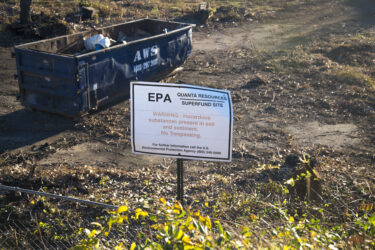Each year, people from all over the world gather to discuss climate goals at an international climate meeting called COP, “conference of parties” — part of the international treaty called the U.N. Framework Convention on Climate Change (UNFCCC).
The nations that participate in the conferences and treaty have recognized the dangers of human-caused climate change. At this annual meeting, government officials from around the world report on progress, agree to share technology and discoveries, negotiate policy and set goals.
For journalists who cover the conferences, the massive amount of information can be difficult to sift through, but a central question was what is an acceptable amount of harm and how can that be measured?
There are scientific findings that seek to answer this question, but parties have different thresholds of “acceptable harm.” What is an acceptable level of poor air quality? What climate catastrophes are countries willing to endure? These questions of “acceptable harm” are further informed by applying a public health lens, and attendees at COP28 gave more attention to environmental health than previous COPs. Due to this global shift to focus more on environmental health, health care journalists will likely see more intersectional stories on the beat.
Back when the UNFCCC treaty was signed, participating countries (in conjunction with the available science) agreed that a 2-degree Celsius increase in pre-industrial global temperatures was the threshold for catastrophic climate outcomes. This measure has informed many of the global climate meetings, and if it is surpassed, it is expected to have dire health consequences for many people, especially in developing nations.
The conference’s official website has a wealth of resources from the 13-day conference that you can use to boost your reporting.
Important health developments
- COP28: The climate crisis is also a health crisis
The intersection of climate change and health was highlighted at COP by conference organizers. The effects of climate change are gravely consequential on health. At previous COPs, health was largely seen as separate from climate change, but studies, research and lived experience show them to be inextricably linked. - HHS Shares Health Sector Climate Resilience and Emissions Reduction Announcements at COP28
At COP28, the U.S. Department of Health and Human Services announced a Climate Change and Health Equity Strategy Supplement, outlining the work of agencies across the Department to support climate resilience and greenhouse gas emission reduction in the U.S. health sector (Joanne Kenen wrote a great tip sheet on this topic for AHCJ). - The Diet Impact Assessment model: a tool for analyzing the health, environmental and affordability implications of dietary change
According to WHO, one major contributing factor to noncommunicable diseases is an unhealthy diet. This model is used to draw the connection between diseases caused by unhealthy diets (heart disease, diabetes, obesity) and the environmental impacts of producing certain foods. The model highlights the multidimensional impacts of climate change.
COP28 delegates urge greater action on climate-linked health risks
The COP meetings draw professionals from different sectors as climate change is far reaching in its effects. The links between non-communicable diseases and climate change have become clearer as more research is done.
Climate change does not appear to be slowing, and global temperatures continue to rise. As the effects of climate change become more severe, health care systems around the world will feel the shock. Experts are warning that more investment is needed in health care systems as diseases like zika, malaria and cholera proliferate. (Check out “COP28 focus on health draws $777 million to fight tropical disease.”)
COP28 president Sultan Ahmed Al-Jaber said climate change has “become one of the greatest threats to human health in the 21st century.”
COP’s ‘health’ day was covered in a thick blanket of smog
This year’s COP was the first time a whole day was designated to the topic of health. In a bitter irony, the day was shrouded in a thick layer of smog that obscured the Dubai skyline. Air quality was deemed unhealthy as the index clocked 155 micrograms per cubic meter of PM2.5 pollution. A good range is 0-50, and moderate is 50-100.
Additional resources
- Cop28 — The Guardian (excellent daily coverage of COP28)
- COP28 Health Day — The United Nations Development Program
- Health Day at COP28: a hard-won (partial) gain — Lancet
- From decarbonization to electric cars, California hopes to showcase climate leadership at COP28 — Los Angeles Times
- Leaders spotlight the critical intersection between health and climate ahead of COP-28 first-ever Health Day — World Health Organization
- Young doctors are at COP28, and they’ve got a message for world leaders — NPR
- Five things to know about climate change and health going into COP 28 — Yale Institute for Global Health
- At COP28, a Growing Sense of Alarm Over the Harms of Air Pollution — Inside Climate News
- How scientists are fighting climate-fuelled disease — BBC
- COP28 Agreement Signals “Beginning of the End” of the Fossil Fuel Era — UNFCCC
- After COP28, a long road ahead — Grist











